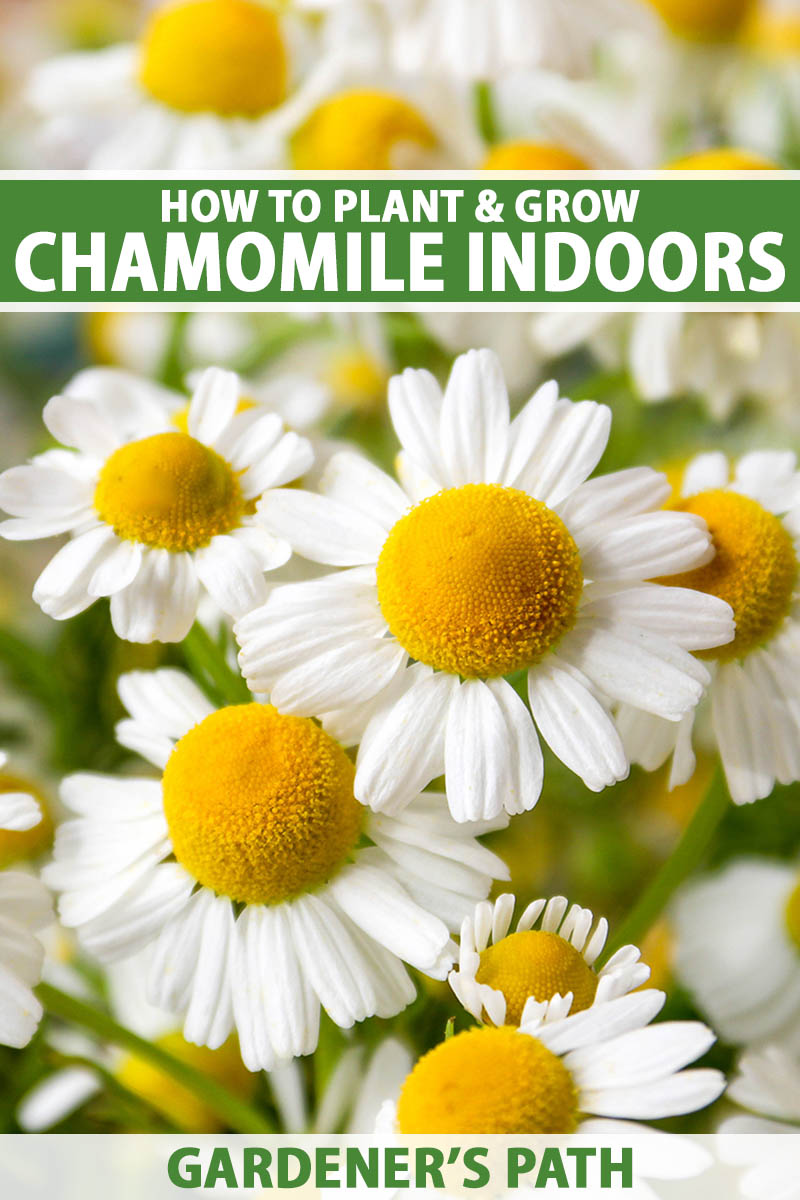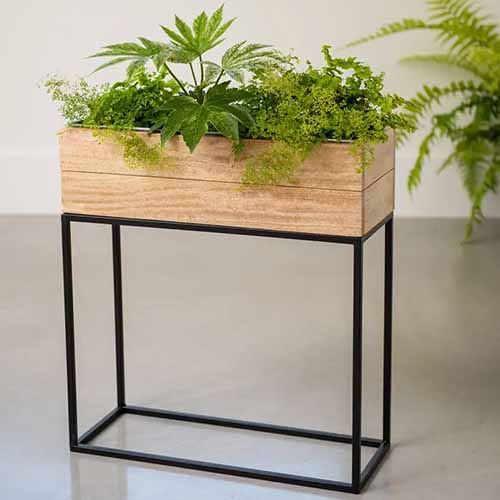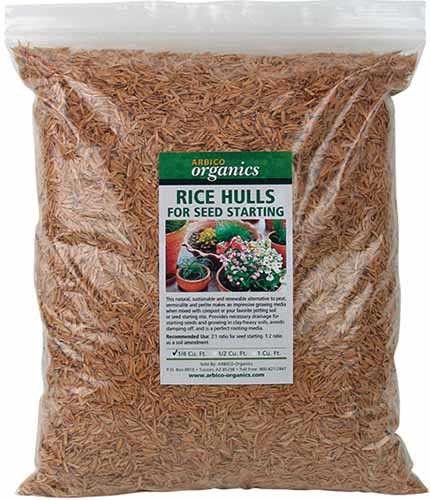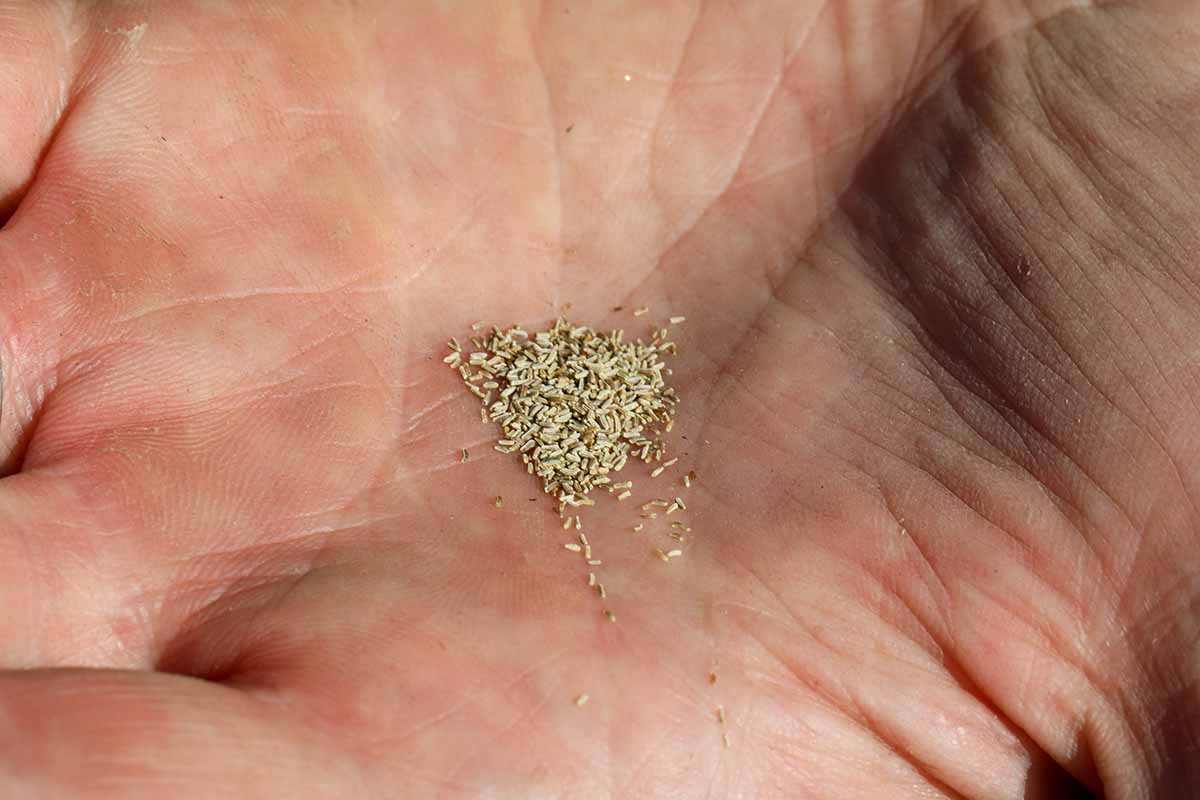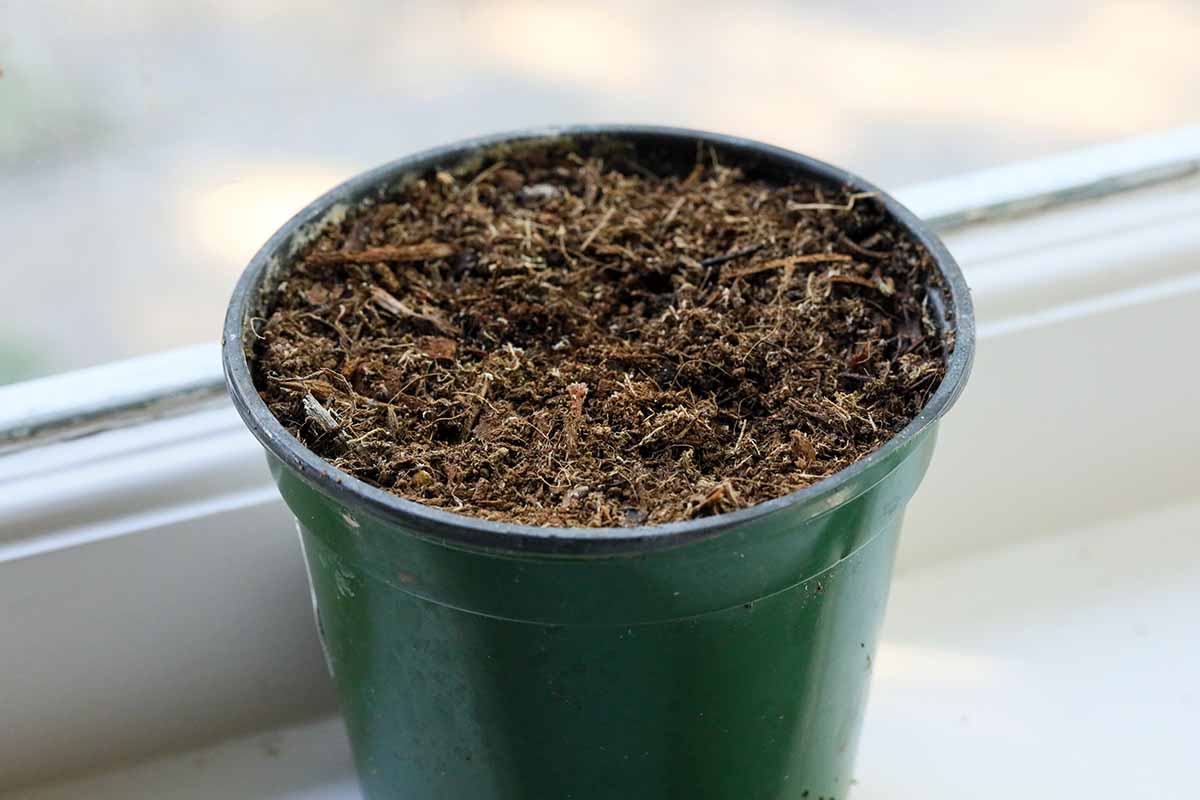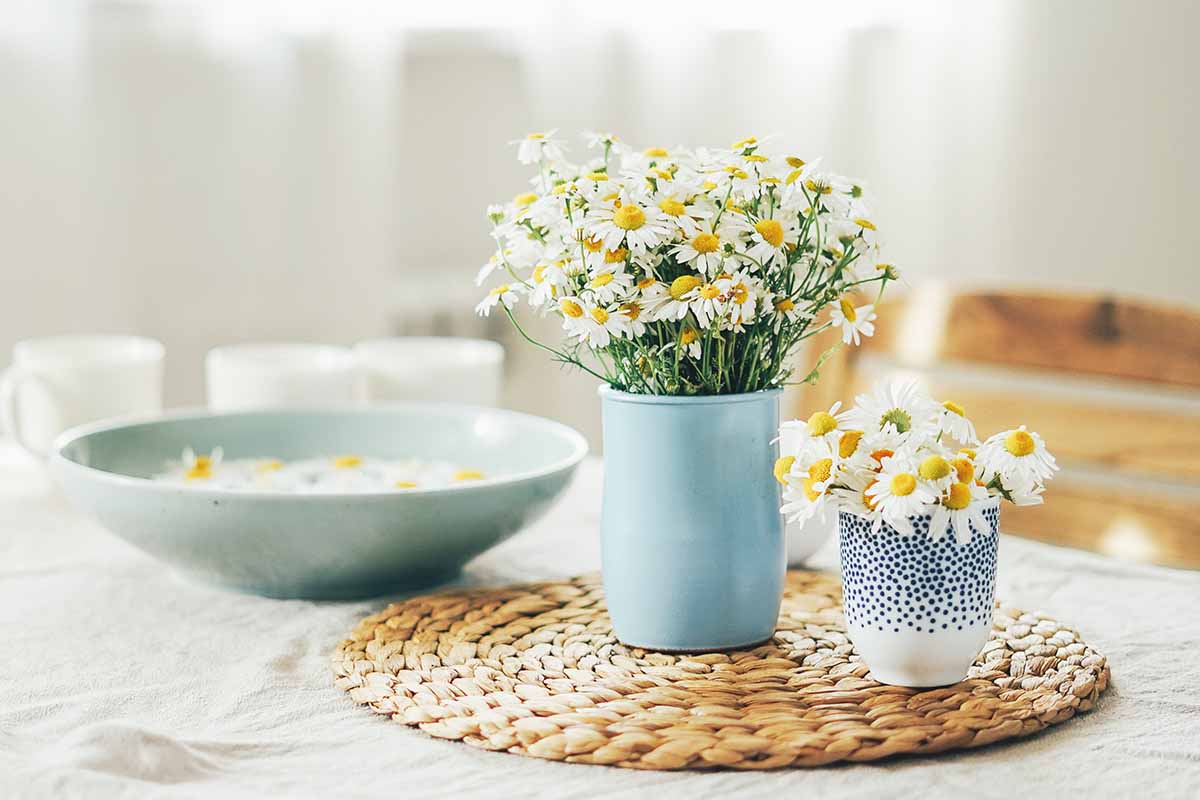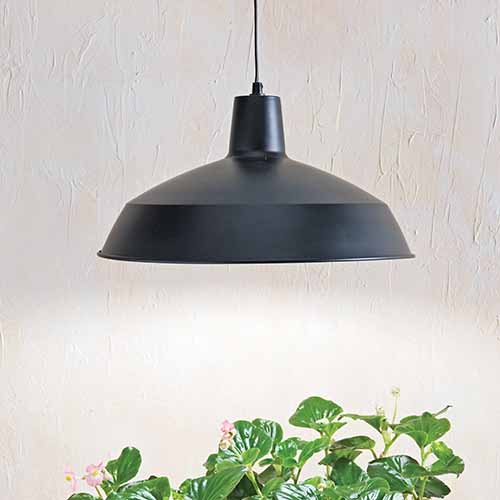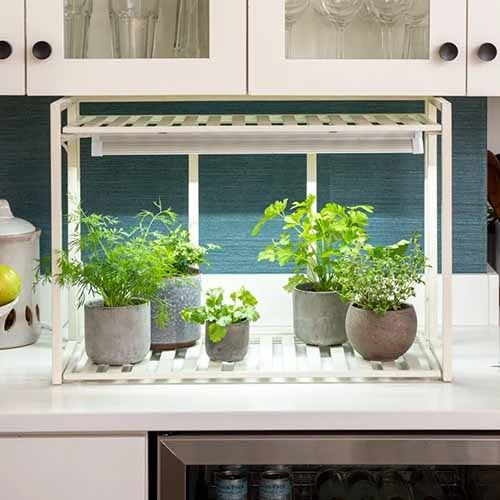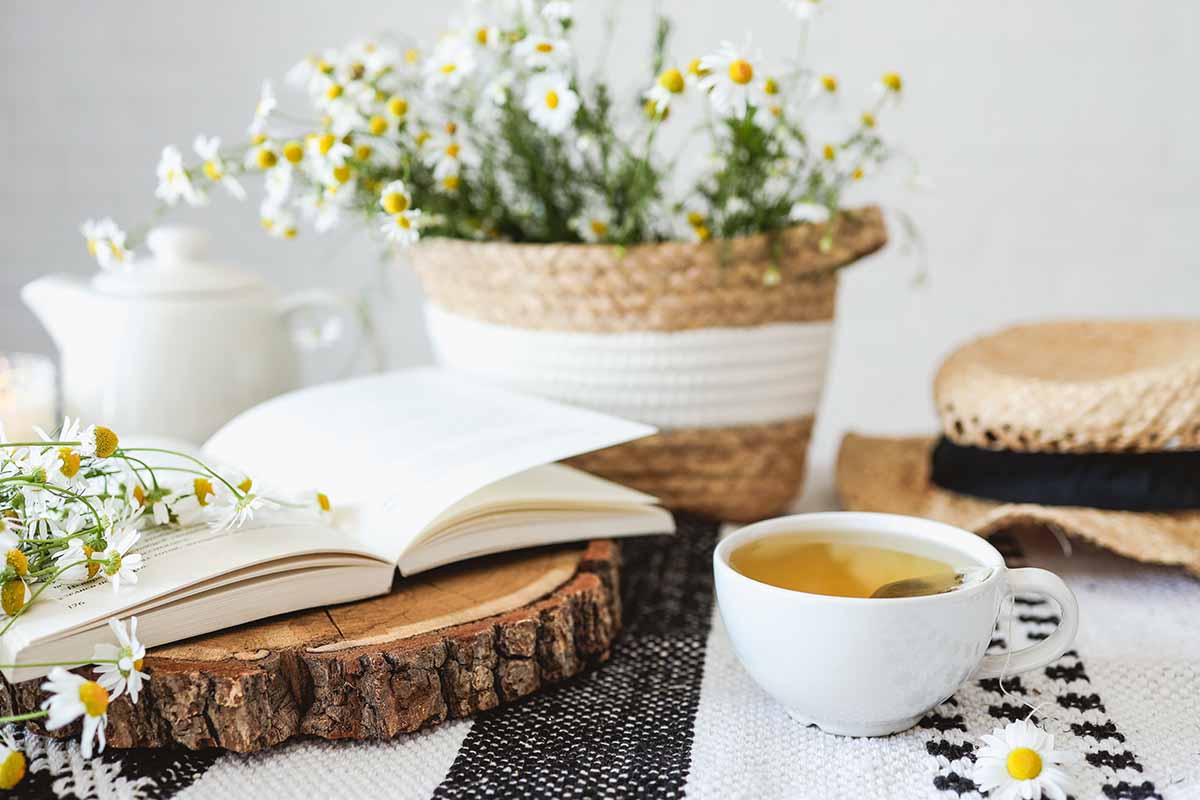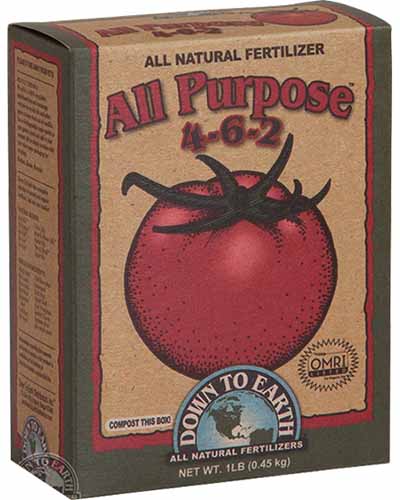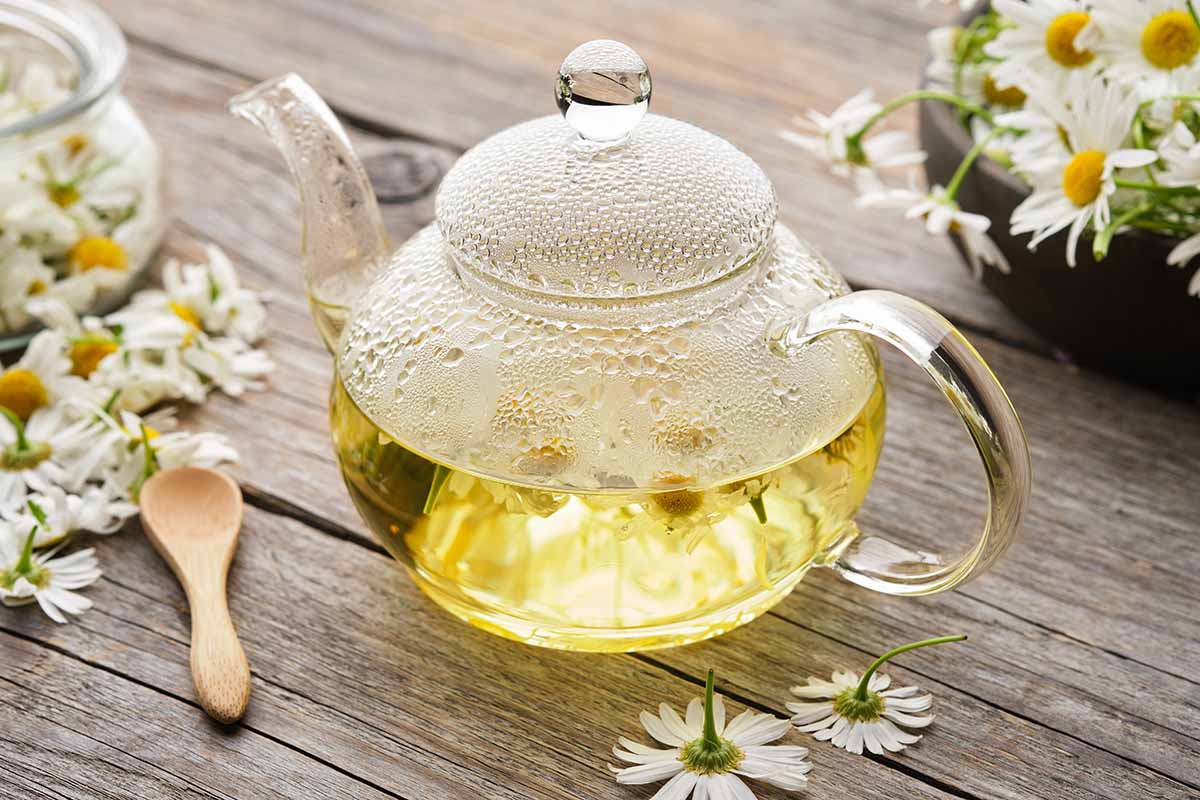It’s lovely brushing up against it while you’re walking through the garden, but you know what’s even better? Being able to pinch off a flower and pop it in your mouth – or your drink! – when you’re walking through your kitchen. If you long for the sweet, herbal scent in the middle of winter or the convenience of harvesting from the comfort of your own kitchen, growing chamomile indoors is the solution. We link to vendors to help you find relevant products. If you buy from one of our links, we may earn a commission. If you’re curious about what we’ll be discussing, here’s what to expect: I’m of the opinion that every house should have a little indoor herb garden, and every indoor herb garden should include chamomile. And it’s not just for tea – the leaves and flowers can be used in cooking as well. Keep it within reach so you can play around with all the different ways you can use it. Any pot six inches in diameter or larger will do, but of course, you’ll see more flowers from bigger plants grown in larger pots. Chamomile has shallow roots, so wide pots are best to maximize the space they have available to grow and spread. Both can be grown in containers indoors, but Roman lends itself best to indoor living. It tends to be more compact and needs less room to thrive. Roman Chamomile Seeds Roman chamomile seeds are available in a variety of package sizes from True Leaf Market. German Chamomile Seeds Or, if your preference is for the German variety, you can find seeds at Botanical Interests.
Pick the Best Container
When it comes to containers, as long as it has drainage and isn’t too petite, you can plop a chamomile plant in there.
Sow Seed
Time to make the magic happen! Seriously, it still seems like magic to me that you can put a tiny little seed into some soil, add water, and within a matter of weeks or a few short months later you’re making tea out of the plant. Self Watering Planter Pot Not only is it the right shape for setting on a windowsill, but it will also keep your chamomile watered even if you’re less than diligent about your watering schedule (as for me – guilty!). If you want something freestanding, choose a container that is both functional and decorative, like this elevated rectangular planter by Tartu. Elevated Rectangular Planter Gardener’s Supply Company carries this steel and mango wood beauty.
Mix Your Soil
You can use standard potting soil and your plants will probably be totally fine, so don’t stress too much about the growing medium. Chamomile is fairly forgiving. But if you want to go the extra mile and assure that your herby beauties have good drainage and plenty of air, mix in some rice hulls. A mix of about three parts soil to one part rice hulls will do nicely. I am always singing the praises of FoxFarm’s Ocean Forest Potting Soil Mix. Not only does the company work to create a sustainable product, but using this mix has made a noticeable difference in the quality of my plants. FoxFarm Ocean Forest Potting Soil Mix Many nurseries are starting to carry rice hulls, which are a waste product from the rice-growing industry. Rice Hulls If you can’t find a local source, quarter-, half-, or one-cubic-foot packages are available at Arbico Organics. I keep a cubic foot of these on hand at all times to mix it into my garden soil and pots. Fill up your container and sprinkle the seeds on top. Gently press them into the soil. You don’t want to bury the seeds, just press them in enough that they won’t float away when you water or if a breeze comes in through the window. Spray the seeds and soil with a spray bottle to moisten the medium. This might take a while because you want at least the top inch of soil to be moist, but you don’t want to flood it so the seeds float away. You can also use a self-watering pot, bottom water, or moisten the medium before sprinkling the seeds on top. Place the planter in an area of your home that receives direct light for at least six hours per day. Keep the soil moist with that spray bottle. You can switch to a stream of water from a watering can that’s suited to caring for houseplants when the seedlings are about an inch tall, or continue to maintain the moisture as needed by adding water to your self-watering container. Once the seedlings emerge, thin them out so there is a maximum of two plants per six-inch pot, or just one plant in any pot smaller than that. If you opted for a seed tray, thin them to four inches apart.
Transplant Seedlings
Every year in the spring and summer, you can find chamomile seedlings all over the place at stores. If you pick one up, the process of putting it in a pot is pretty easy. Put a little of that soil mix described above in a pot that is at least one size up from the container the seedling came in. You want the plant to sit at the same height it was growing in the original pot, with the soil line sitting about a half an inch to an inch below the rim of the pot so it doesn’t overflow when you water. Fill in around the plant with more soil and water well to settle it in. Add more soil if you need to. Place the container in a location where it will receive at least six hours of sunlight. As with seeds, you’ll need to keep the soil moist. Once established they can go a bit longer between watering, but it should stay moist initially.
Care Tips
Chamomile is one of the easier herbs to care for indoors. The major factor that you need to keep in mind is sunlight. While your indoor basil or cilantro might be fine in a bit less light, chamomile needs full sunlight to produce flowers. If you don’t have a window available that receives at least six hours of bright sunlight per day, you’ll need to provide supplemental lighting. That might seem like a whole production that’s going to be a pain in the butt, but using grow lights enables you to grow a greater variety of plants indoors. Prop the container up on the sloping side as needed so it sits more or less flat. This prevents water from gathering in the far lower edge of the container or from running away from the shallow roots at the top before they can soak up the moisture. You can buy fixtures that blend right into your home decor. Barnyard Pendant LED Grow Light For instance, if you have a farmhouse vibe happening, this Barnyard Pendant, available at Gardener’s Supply Company, is perfect. Or you can find tabletop setups that make it easy to raise healthy herbs year-round. Oslo LED Grow Light This single-tier light from Oslo that’s available via Gardener’s Supply Company fits under standard kitchen cabinets and folds up for storage when you’re not using it. If you go the window route, keep in mind that many windowsills – actually called the “stool” of the window, but most people know it as a sill – tend to slope down toward the exterior of the house. While this is excellent for draining out any moisture that comes in, it doesn’t work so well if you put a plant there. Chamomile is perfectly fine in colder weather so a drafty or single-pane window isn’t such a big deal most of the time. However, if you live somewhere with very cold winters, especially at night, this might make the plant think it’s time to go dormant. Keep your plant somewhere a bit warmer during the winter, in that case. You’ll need to feed your chamomile every three months. Make a note in your gardening journal, and set a reminder on your phone. I opt for Down to Earth’s All-Purpose Mix because it provides the best nutrition for a wide variety of species and it comes in a compostable box. It’s good for use on both indoor and outdoor plants, those that are grown in the ground or in containers. Down to Earth All Purpose Mix Arbico Organics carries this product in one-, five-, or 15-pound containers. Pick the flowers and leaves when you need them, but never harvest more than two-thirds of the entire plant unless you’re done with the plant and ready to start fresh. You can divide and repot as the plant grows or you can upgrade to a larger container as needed. Remember that plants grow slower, if at all, in the winter, unless you’re providing supplemental lighting. To divide, pull the plant out of the pot and cut it down the middle through the stems, leaves, roots, and soil. Replant as you would a transplant, in two separate pots. To size up, plant as you would a seedling as described above.
Enjoy the Calming Influence of Chamomile Indoors
That’s it, you’re ready! Now, the next time you wake up in the middle of the night and can’t get back to sleep, you don’t have to brave the great outdoors to pluck your herbal tea sleep remedy. It’s right inside, just waiting to ease you back to sleep. Where are you keeping your indoor chamomile? Do you have a big setup in your laundry room or a little pot in your kitchen window? Let us know in the comments. If you’re looking for more information about chamomile, we have a few other guides that you might find useful. Here are just a few to start with:
How to Grow Chamomile in ContainersWhat’s the Difference Between English and German Chamomile?How to Grow an Aromatic Chamomile Lawn
